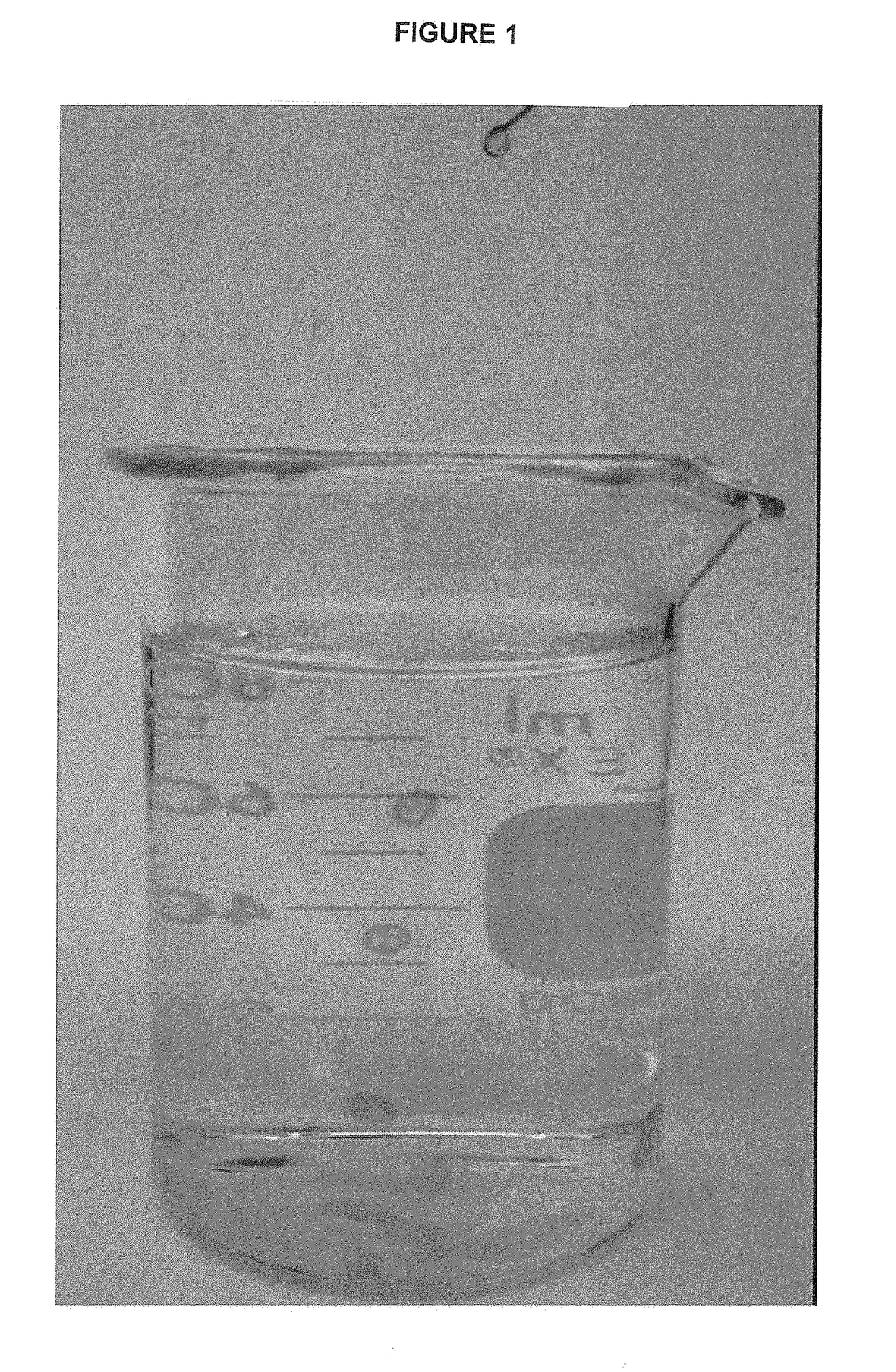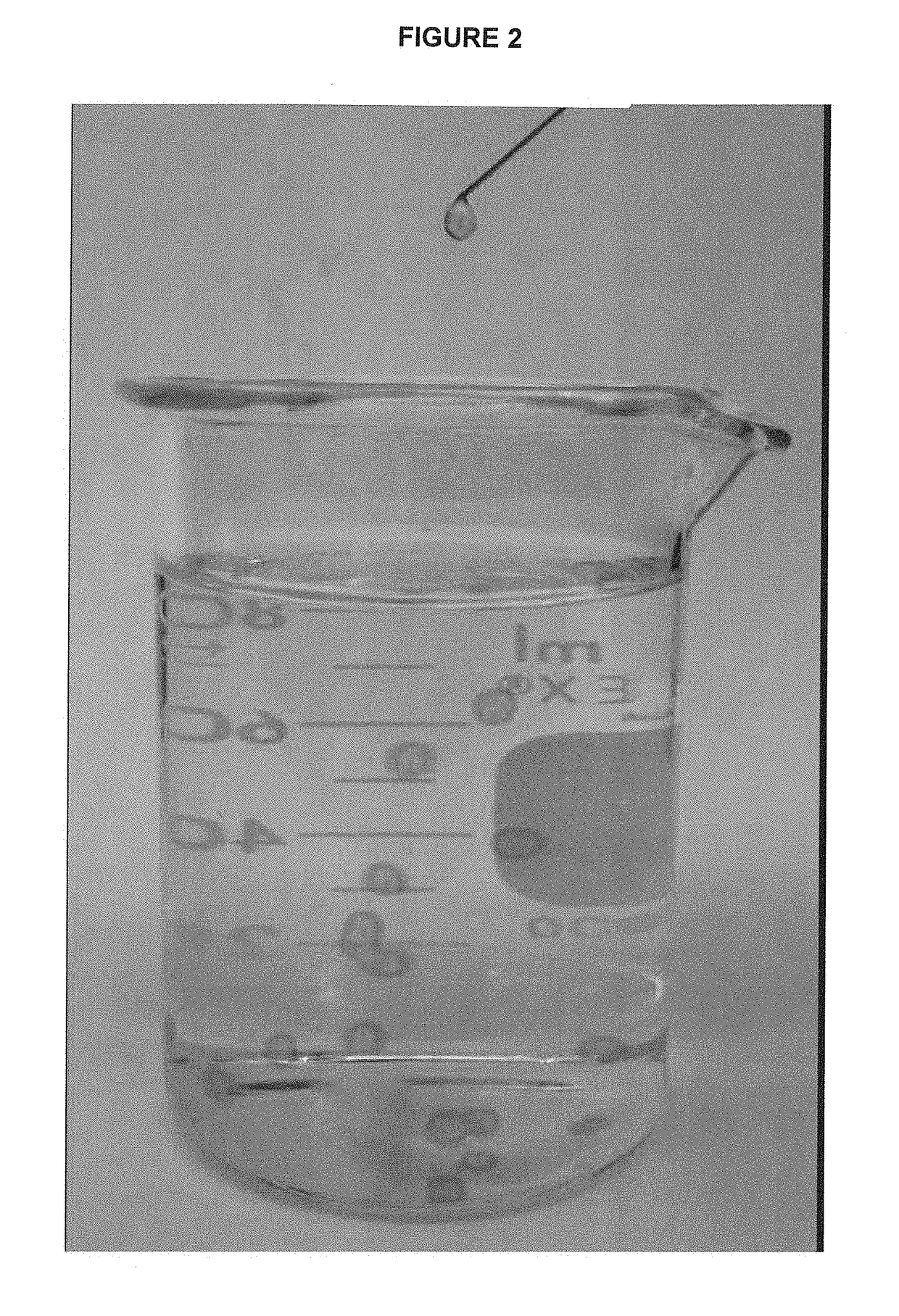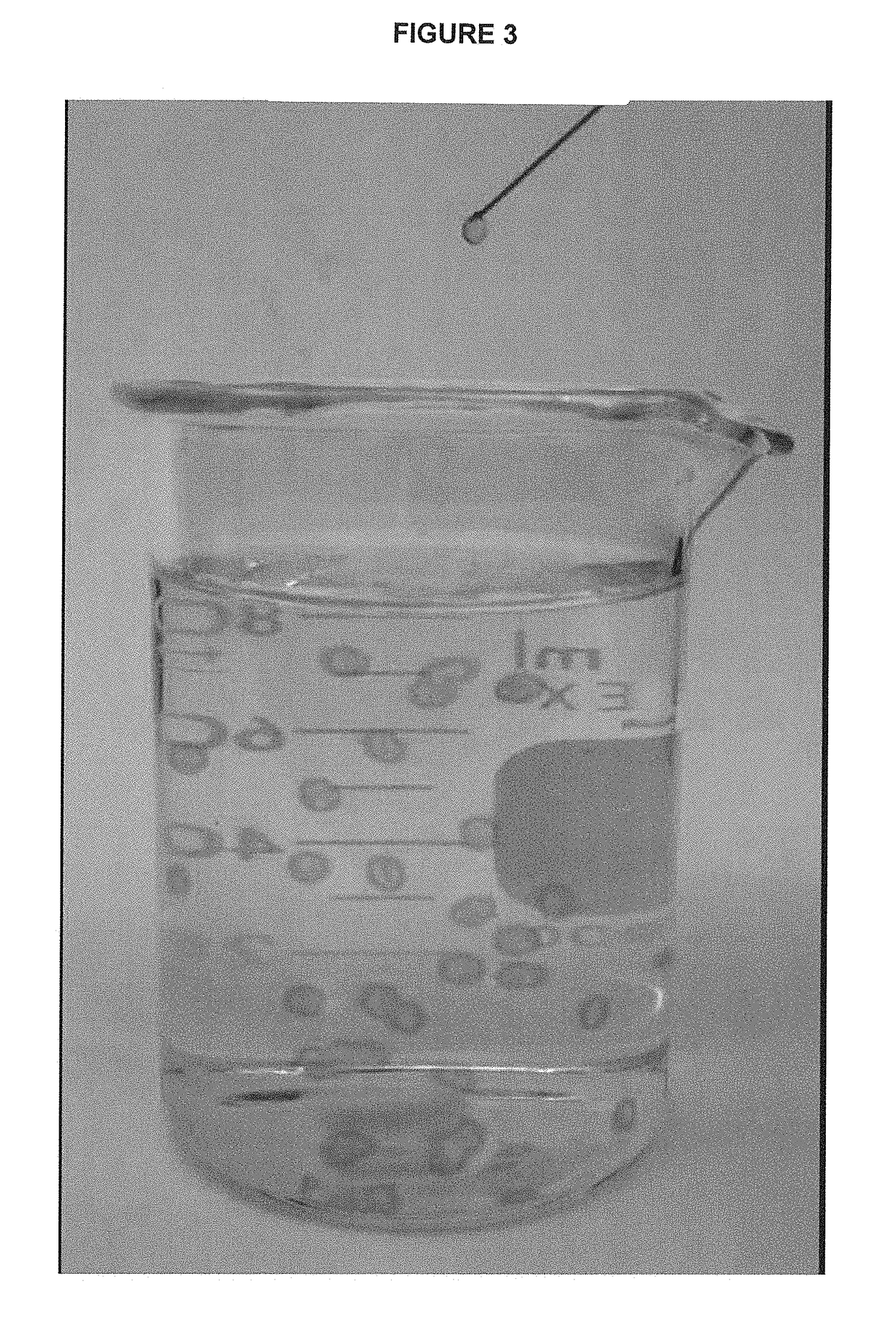Polysaccharide based microparticles with improved stability and methods of making the same
a technology of polysaccharide and microparticles, which is applied in the direction of pharmaceutical active ingredients, toilet preparations, pharmaceutical delivery mechanisms, etc., can solve the problems of difficult extraction of water treatment plants from water streams, big environmental problems, and difficult transition
- Summary
- Abstract
- Description
- Claims
- Application Information
AI Technical Summary
Benefits of technology
Problems solved by technology
Method used
Image
Examples
Embodiment Construction
[0032]In one embodiment the invention, a first mixture is prepared by dissolving a gel-forming polysaccharide (it should be specifically one that contains a carboxylic acid group, so all polyuronic acids (for example, but not limited to: alginate, pectin, pectate, oxidized starch, or combinations thereof) in water, preferably at room temperature, to get a final 1-6% w / v solution of the polysaccharide(s). In other embodiments, a final 1.2-5% w / v solution of the polysaccharide is achieved. In still other embodiments, a final 1.4-4% w / v solution of the polysaccharide is achieved. In still other embodiments, a final 1.5-3% w / v solution of the polysaccharide is achieved.
[0033]Next, a second polysaccharide is added to the first mixture to get a final concentration of 0.1-1% w / v and thereby forming a second mixture. The second polysaccharide can be any polysaccharide. The second polysaccharide is used to tune the mechanical properties and swelling properties of the microparticle. In one em...
PUM
| Property | Measurement | Unit |
|---|---|---|
| Temperature | aaaaa | aaaaa |
| Temperature | aaaaa | aaaaa |
| Fraction | aaaaa | aaaaa |
Abstract
Description
Claims
Application Information
 Login to View More
Login to View More - R&D
- Intellectual Property
- Life Sciences
- Materials
- Tech Scout
- Unparalleled Data Quality
- Higher Quality Content
- 60% Fewer Hallucinations
Browse by: Latest US Patents, China's latest patents, Technical Efficacy Thesaurus, Application Domain, Technology Topic, Popular Technical Reports.
© 2025 PatSnap. All rights reserved.Legal|Privacy policy|Modern Slavery Act Transparency Statement|Sitemap|About US| Contact US: help@patsnap.com



